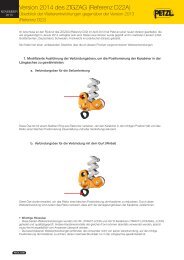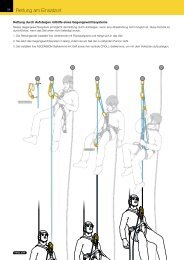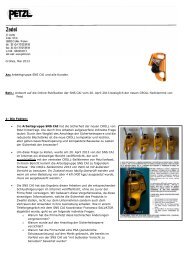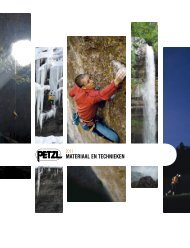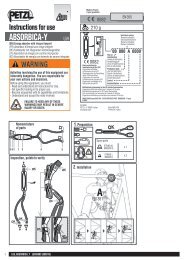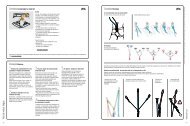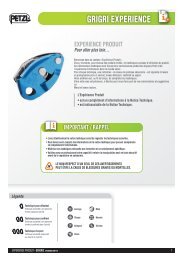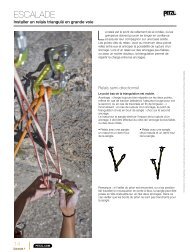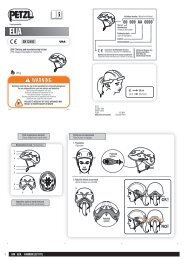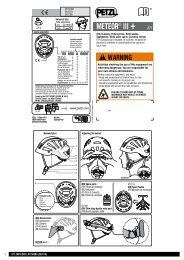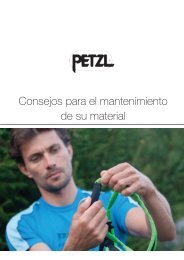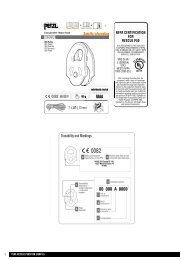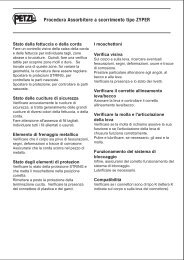You also want an ePaper? Increase the reach of your titles
YUMPU automatically turns print PDFs into web optimized ePapers that Google loves.
Linking rappels<br />
3. Once tied into the anchor below, release the rope from the<br />
descender and from the progress capture device. Attach the<br />
two ropes onto the anchor so as not to lose them and to back<br />
up the second climber's descent.<br />
Pulling the rope<br />
5. Once the second climber is tied in, pull the rope.<br />
The second pulls the appropriate rope end; the lead climber<br />
checks that it runs smoothly through the maillon. Once the knot<br />
reaches the anchor, the lead climber may begin installing his<br />
progress capture device and descender. Once the two ropes<br />
have been pulled, the lead climber is ready to descend.<br />
19<br />
Contents<br />
REVERSO 4<br />
The REVERSO 4 belay/rappel device is ultra-light<br />
(59 g, 25 % lighter than the REVERSO 3) and<br />
intuitive to use. V-shaped friction channels with<br />
asymmetrical lateral grooves adapt the friction to the<br />
type of rope for better control. For dynamic double<br />
and twin (diameter ≥ 7.5 mm) and single (diameter<br />
≥ 8.9 mm). A single device for many uses: belaying<br />
a lead climber, or one or two second climbers, and<br />
descending on rappel. Quick changeovers from<br />
Reverso mode to belaying the leader when climbing<br />
multi-pitch routes.<br />
4. Remove the knots at the ends of the rope. Run the rope end<br />
to be pulled through the maillon.<br />
The friction channels<br />
adapt the friction on the<br />
rope to any diameter.<br />
Information is non-exhaustive. Refer to the other pages as well as to the user instructions and technical manuals. Technical training is essential.



